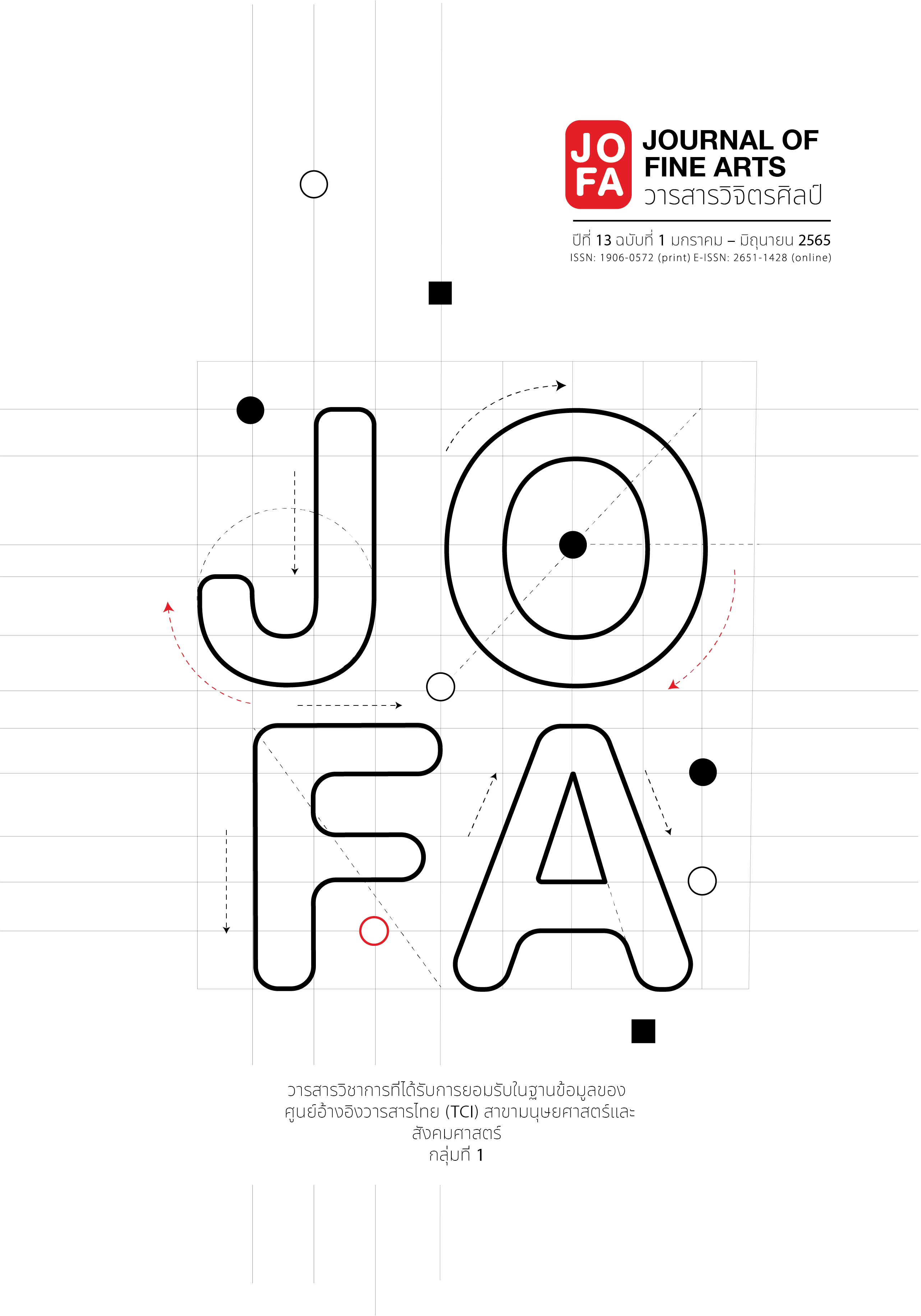Furniture Models Making From Reclaimed Transport Wood Package
Main Article Content
Abstract
The objectives of this article are to study on the process of the building of the prototype models from furniture design works, and to try building the prototype model from furniture design work from pieces of wooden packaging from transportation. The study process consists of 2 steps. The first step is to study on the process of the building of the prototype models from furniture design works, by the review of relevant literature and the field work to study on physical features of pieces of wooden packaging from transportation. Afterward, initial concept is determined. From the aforementioned operations, it is discovered that the wood attained from the transportation is divided into 4 types, namely, pine wood, rubber wood, rain-tree wood and plywood sheet. In the second step, the trial of the building of furniture prototypes from pieces of wood of the 4 kinds from transportation is carried out.
The results from the research show that from the test of physical features, it is apparent that pieces of pine wood, rubber wood, rain-tree wood and plywood from the packaging from transportation are suitable alternative materials for the building of prototype furniture in the real size, because they are not costly, have natural motifs and can be dyed well. However, if these pieces of wood are used in building downsized or miniature models, other features, such as the utilization of production tools and the assembly in accordance with complicated model, have to be considered and compared with other materials that may be more expensive but more popular, such as balsa wood and water jasmine (Wrightia religiosa) wood, because they are more convenient to be used with standard production tools.
Article Details

This work is licensed under a Creative Commons Attribution-NonCommercial-NoDerivatives 4.0 International License.
References
108plywood. “Rākhā MaiʻAt. [Plywood price]. ” 108plywood. Accessed May 21, 2020. http://www.108plywood.com/article/2/%E0%B8%A3%E0%B8%B2%E0%B8%84%E0%B8%B2%E0%B9%84%E0%B8%A1%E0%B9%89%E0%B8%AD%E0%B8%B1%E0%B8%94.
Charungchittisunthorn, W. Lakkān Læ Nǣokhit Kānʻō̜kbǣp Phalittaphan. [i.d. story theory & concept of design]. Bangkok: iDesign, 2005.
Forest Product Development Group Office of Forest Management and Forest Products Research. Department of Forestry. Mainư̄akhængkhō̜ngprathedthai. [The Thai Hardwoods]. Bangkok: Sukhumvit Media Marketing, 2005. Accessed May 2, 2020. https://cmu.to/Jg4C8.
Hobby Model Team. Hobby Technics. Bangkok: Animate Group, 2010.
Khanthachote, S. Kānʻō̜kbǣp Khrư̄angrư̄an. [Furniture design]. Bangkok: Odeon Store, 1985.
Lewis, H., Gertsakis, J.,..., and Sweatman, A. Center of Excellence for Environmentally Friendly Product Development National Metal and Materials Technology Center. Pathumthani: MTEC, 2009.
Leesuwan, V. Mō̜radokthai. [Thai Herritage]. Bangkok: Panaya, 1978.
Office of Health Information Systems Development. “Parimān mūnfō̜i chumchon thī kœ̄t khưn nai prathedthai Pī A.D. 2548 - 2553. [Amount of community waste occurring in Thailand year 2005 - 2010].” Health Information System Development Office. Accessed May 2, 2020. https://www.hiso.or.th/hiso/tonkit/tonkits_43.php.
Phumichai, T., Riyapan, P.,..., and Sungsing, K. “Khunnasombat Khō̜ng Mai Yāngphārā Phư̄a KāN Khatlư̄ak Phan Yāng. [Properties of rubber wood For the selection of rubber varieties].” Rubber Journal 10, no. 2 (July/September 2012): 32 - 47. Accessed November 11, 2020. https://cmu.to/pZ9G6.
Somjai. “Rākhāmaibansā. [Balsa price]. ” Somjai. Accessed May 21, 2020. https://statinery-store-1316.business.site/posts/9185520932165458554.
Suwannasre, P., Egwutvongsa, S., and Seviset, S. “Kānsưksā Læ ʻō̜k Bǣp Fēničhœ̄ Čhāk Sēt Watsadu Bančhuphan Maithī Dai Čhāk Kān Khonsong”. [Study and Design Furniture of Residues from Transport wood package].” Art and Architecture Journal Naresuan University 8, no. 1 (January/June 2017): 142 - 154. Accessed May 2, 2020. https://archmisarch.nu.ac.th/arch_ajnu/journal/article_file/article_2017_158.pdf.


